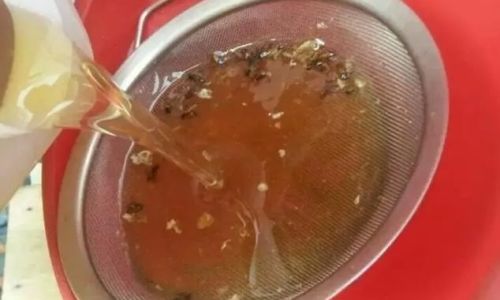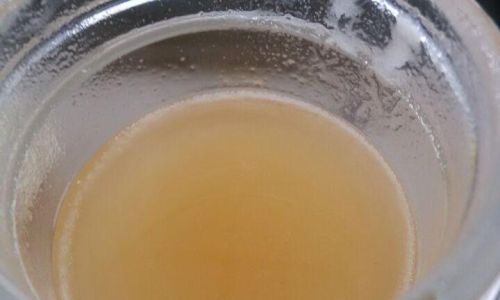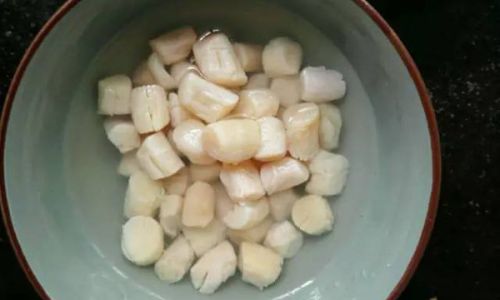Table of content
- Temperature
- Light and Humidity
- Physical Changes
- Chemical Changes
- Sensory Changes
- Room Temperature Storage
- Airtight Containers
- Long-Term Storage
- Crystallization Management
- Freezing (for Limited Use)
- Water Bath Technique
- Myth: Honey Never Spoils
- Myth: Refrigeration Preserves Freshness
- Preference for Crystallized Honey
Introduction
Honey, a natural sweetener derived from the nectar of flowers by bees, has been valued for its sweetness and numerous health benefits for thousands of years. Its unique properties, such as its high sugar content, low moisture level, and acidic pH, make it an exceptionally stable food with a long shelf life. However, the question of whether fresh honey can be refrigerated often arises among consumers, especially those who wish to preserve its freshness and quality for as long as possible. This article delves into the intricacies of storing fresh honey, exploring whether refrigeration is a viable option and the potential implications of doing so.
Understanding the Composition and Properties of Honey
Before discussing the suitability of refrigerating honey, it is crucial to understand its basic composition and properties. Honey is primarily composed of sugars, primarily glucose and fructose, which account for about 80% of its total weight. The remaining components include water, trace amounts of minerals, vitamins, enzymes, and organic acids. The high sugar content of honey creates an environment with a very low water activity, making it inhospitable to most microorganisms. Additionally, honey has a pH level between 3.2 and 4.5, which is acidic enough to inhibit the growth of many bacteria and fungi.
These properties contribute to honey’s remarkable stability and resistance to spoilage. Properly stored honey can retain its quality for years, even decades, without significant degradation. However, this stability does not mean that honey cannot undergo changes over time, particularly if stored improperly.

The Effects of Storage Conditions on Honey
The quality of honey can be affected by various storage conditions, including temperature, light exposure, and humidity. Among these, temperature plays a pivotal role in determining honey’s long-term stability.
Temperature
Honey is a super-saturated solution of sugars, which means it contains more dissolved sugar than it can hold at equilibrium. This state is maintained by the inhibition of crystallization due to the high glucose-to-fructose ratio and the presence of other solutes. However, when honey is exposed to temperatures below its crystallization point, the glucose molecules can begin to arrange themselves into crystalline structures, leading to the formation of solid grains or a completely solidified mass.
While crystallization is a natural process that does not affect honey’s nutritional value or taste once it is redissolved, many consumers prefer their honey to remain in its liquid state. Therefore, controlling temperature is crucial for preventing crystallization, especially in varieties prone to it, such as those high in glucose content.
Light and Humidity
Excessive exposure to light, particularly ultraviolet radiation, can cause honey to darken and develop off-flavors. This is due to the degradation of pigments and other compounds present in honey. Similarly, high humidity can lead to moisture absorption, increasing the water activity and making honey more susceptible to microbial growth and fermentation.
Can Fresh Honey Be Refrigerated?
The question of whether fresh honey can be refrigerated hinges on understanding how refrigeration affects honey’s physical and chemical properties.

Physical Changes
Refrigeration significantly lowers the temperature of honey, which can accelerate the crystallization process in some varieties. Crystallization in refrigerated honey often occurs more rapidly and results in larger, harder crystals compared to honey that crystallizes at room temperature. This can make the honey difficult to spoon out or use directly from the container.
Moreover, the repeated expansion and contraction of honey due to temperature fluctuations (such as when honey is removed from the refrigerator and allowed to warm up) can cause the glass jar to crack or break. This is particularly problematic with older jars or those that have undergone thermal stress.
Chemical Changes
From a chemical standpoint, refrigeration does not significantly alter honey’s composition or nutritional profile. The sugars, vitamins, minerals, and enzymes present in honey remain largely intact under refrigerated conditions. However, prolonged storage at low temperatures can potentially inactivate some of the enzymes, particularly those responsible for honey’s antioxidant activity.
Sensory Changes
Refrigeration can also affect honey’s sensory attributes. Cold temperatures can dull honey’s aroma and flavor, making it less appealing to consumers. Additionally, the texture of refrigerated honey can become thicker and more viscous, further impacting its mouthfeel and overall eating experience.
Best Practices for Storing Fresh Honey
Given the potential drawbacks of refrigerating honey, it is essential to adopt best practices for storing fresh honey to maintain its quality and appeal.

Room Temperature Storage
For most types of honey, storing at room temperature in a cool, dark place is the recommended approach. This allows honey to retain its liquid state and sensory properties while minimizing the risk of crystallization. A pantry or cupboard away from direct sunlight and heat sources is ideal.
Airtight Containers
Using airtight containers is crucial for preventing moisture absorption and oxidation, which can degrade honey’s quality over time. Glass jars with tight-fitting lids are a good choice, as they are non-reactive and easy to clean. Avoid storing honey in metal containers, as they can react with honey’s acidic components, leading to off-flavors and discoloration.
Long-Term Storage
For long-term storage, consider using smaller containers to minimize exposure to air once the honey jar is opened. This helps preserve honey’s freshness by reducing the surface area exposed to oxygen. Additionally, labeling containers with the date of purchase or opening can help track honey’s age and ensure it is used within its prime.
Crystallization Management
If crystallization occurs, it can be reversed by gently heating the honey to a temperature below its boiling point (around 110°F or 43°C) and stirring until the crystals dissolve. Be cautious not to overheat the honey, as this can destroy its enzymes and alter its flavor.
Alternative Storage Methods
While room temperature storage is the most straightforward and effective method for preserving honey’s quality, some alternative methods may be suitable for specific needs or preferences.

Freezing (for Limited Use)
While not ideal, freezing honey can be a viable option for short-term preservation or for specific culinary uses, such as making honey ice cream or sorbet. When frozen, honey becomes a solid block that can be grated or chopped into small pieces for use. However, be aware that frozen honey will crystallize extensively and may not return to its original liquid state after thawing.
Water Bath Technique
For honey prone to crystallization, a water bath technique can be used to maintain its liquid state. Place the honey jar in a warm water bath (not exceeding 110°F or 43°C) for a few hours or until the honey becomes liquid. This method can be repeated as needed, but it is not a permanent solution for preventing crystallization.
Consumer Preferences and Myths
Consumer preferences for honey storage vary widely, often influenced by personal experience, cultural practices, and marketing claims. Some myths and misconceptions about storing honey persist, which can lead to confusion among consumers.
Myth: Honey Never Spoils
While honey has an exceptionally long shelf life, it can undergo changes over time that affect its quality and appeal. These include crystallization, darkening, and the loss of volatile aroma compounds. Proper storage practices can slow these changes but cannot prevent them indefinitely.
Myth: Refrigeration Preserves Freshness
As discussed, refrigerating honey can actually accelerate crystallization and alter its sensory properties, making it less appealing for direct consumption. For most types of honey, room temperature storage is the better choice for maintaining freshness and quality.

Preference for Crystallized Honey
Interestingly, some consumers prefer their honey crystallized, as they find the texture and mouthfeel more enjoyable. For these individuals, allowing honey to crystallize naturally may be the preferred storage method.
Conclusion
In conclusion, while refrigerating fresh honey is technically feasible, it is generally not recommended due to the potential for accelerated crystallization and sensory degradation. Instead, storing honey at room temperature in a cool, dark place in an airtight container is the most effective way to maintain its quality and appeal. By understanding honey’s composition, properties, and the effects of storage conditions, consumers can make informed decisions about how to store their honey to ensure it retains its freshness and nutritional value for as long as possible.






0 comments